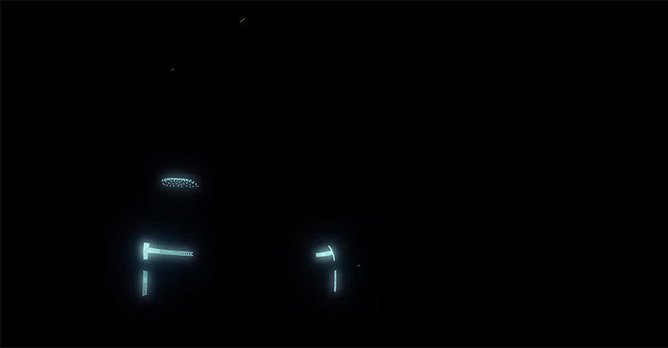Volvo just teased its all-electric successor to the XC90 again - and it's going to be the firm's safest car yet
24 Sep 2022|1,484 views
Volvo wants to remind us of its synonymy with, and industry-leading position in automotive safety - it was the first marque to introduce the modern three-point seatbelt in the 1960s.
And to do that, it's teased its upcoming all-electric flagship SUV not with camouflaged images or horsepower figures, but a deep dive into the firm's next-gen safety systems. Named the EX90, the car will herald in a new era of safety for Volvo's vehicles when it is unveiled to the world on 9 November 2022. This is widely believed to be a replacement for its longstanding XC90 SUV.
The most significant piece of tech that Volvo's new flagship will possess is in-built LiDAR - a precision light-enabled radar system that measures distance with pulsed laser - housed in the vehicle's roofline.
Volvo is claiming that its incorporation of the technology possesses the sophistication to function equally well in both day and night conditions to detect even 'heavily-camouflaged' obstructions, such as a "black tyre on a black road, 150 metres ahead".
But that's not where the show of state-of-art tech ends. The EX90 will introduce system redundancy to a Volvo car for the first time, complementing the LiDAR with five radars, eight cameras, and 16 ultrasonic sensors. Volvo believes that the various sensors have their own strengths, each of which "helps… push the envelope of our understanding of the environment".
The intermixing of these various technologies will naturally require the car to function like a supercomputer, and the Swedish marque has developed a "unique combination of core computing and in-house software" to power this. Impressively, this full suite of safety technologies will also be offered as standard on the SUV.
The inclusion of LiDAR will also naturally raise some questions with regards to the EX90's self-driving capabilities. While details are still scant, Volvo says that autonomous driving features will be available via over-the-air subscription (although caveated as "following certain conditions and in certain places").
Additionally, the firm's dual-pronged approach to enhancing safety means that it's focusing on what's happening inside the car to the driver.
In-house designed algorithms apparently promise to better detect when the driver is feeling fatigued or distracted, and transmit alerts to him or her consequently. As an incredible (if somewhat creepy) example, the in-car radar sensing system will be able to analyse real-time data such as the driver's breathing.
Altogether, Volvo believes that the safety standard in the EX90 will be "beyond any Volvo car before it". With the next generation of safety systems unveiled alongside the car, the firm is ultimately working towards its safety vision that no one should be killed or seriously injured in a new Volvo car.
And to do that, it's teased its upcoming all-electric flagship SUV not with camouflaged images or horsepower figures, but a deep dive into the firm's next-gen safety systems. Named the EX90, the car will herald in a new era of safety for Volvo's vehicles when it is unveiled to the world on 9 November 2022. This is widely believed to be a replacement for its longstanding XC90 SUV.
The most significant piece of tech that Volvo's new flagship will possess is in-built LiDAR - a precision light-enabled radar system that measures distance with pulsed laser - housed in the vehicle's roofline.
Volvo is claiming that its incorporation of the technology possesses the sophistication to function equally well in both day and night conditions to detect even 'heavily-camouflaged' obstructions, such as a "black tyre on a black road, 150 metres ahead".
But that's not where the show of state-of-art tech ends. The EX90 will introduce system redundancy to a Volvo car for the first time, complementing the LiDAR with five radars, eight cameras, and 16 ultrasonic sensors. Volvo believes that the various sensors have their own strengths, each of which "helps… push the envelope of our understanding of the environment".
The intermixing of these various technologies will naturally require the car to function like a supercomputer, and the Swedish marque has developed a "unique combination of core computing and in-house software" to power this. Impressively, this full suite of safety technologies will also be offered as standard on the SUV.
The inclusion of LiDAR will also naturally raise some questions with regards to the EX90's self-driving capabilities. While details are still scant, Volvo says that autonomous driving features will be available via over-the-air subscription (although caveated as "following certain conditions and in certain places").
Additionally, the firm's dual-pronged approach to enhancing safety means that it's focusing on what's happening inside the car to the driver.
In-house designed algorithms apparently promise to better detect when the driver is feeling fatigued or distracted, and transmit alerts to him or her consequently. As an incredible (if somewhat creepy) example, the in-car radar sensing system will be able to analyse real-time data such as the driver's breathing.
Altogether, Volvo believes that the safety standard in the EX90 will be "beyond any Volvo car before it". With the next generation of safety systems unveiled alongside the car, the firm is ultimately working towards its safety vision that no one should be killed or seriously injured in a new Volvo car.
Volvo wants to remind us of its synonymy with, and industry-leading position in automotive safety - it was the first marque to introduce the modern three-point seatbelt in the 1960s.
And to do that, it's teased its upcoming all-electric flagship SUV not with camouflaged images or horsepower figures, but a deep dive into the firm's next-gen safety systems. Named the EX90, the car will herald in a new era of safety for Volvo's vehicles when it is unveiled to the world on 9 November 2022. This is widely believed to be a replacement for its longstanding XC90 SUV.
The most significant piece of tech that Volvo's new flagship will possess is in-built LiDAR - a precision light-enabled radar system that measures distance with pulsed laser - housed in the vehicle's roofline.
Volvo is claiming that its incorporation of the technology possesses the sophistication to function equally well in both day and night conditions to detect even 'heavily-camouflaged' obstructions, such as a "black tyre on a black road, 150 metres ahead".
But that's not where the show of state-of-art tech ends. The EX90 will introduce system redundancy to a Volvo car for the first time, complementing the LiDAR with five radars, eight cameras, and 16 ultrasonic sensors. Volvo believes that the various sensors have their own strengths, each of which "helps… push the envelope of our understanding of the environment".
The intermixing of these various technologies will naturally require the car to function like a supercomputer, and the Swedish marque has developed a "unique combination of core computing and in-house software" to power this. Impressively, this full suite of safety technologies will also be offered as standard on the SUV.
The inclusion of LiDAR will also naturally raise some questions with regards to the EX90's self-driving capabilities. While details are still scant, Volvo says that autonomous driving features will be available via over-the-air subscription (although caveated as "following certain conditions and in certain places").
Additionally, the firm's dual-pronged approach to enhancing safety means that it's focusing on what's happening inside the car to the driver.
In-house designed algorithms apparently promise to better detect when the driver is feeling fatigued or distracted, and transmit alerts to him or her consequently. As an incredible (if somewhat creepy) example, the in-car radar sensing system will be able to analyse real-time data such as the driver's breathing.
Altogether, Volvo believes that the safety standard in the EX90 will be "beyond any Volvo car before it". With the next generation of safety systems unveiled alongside the car, the firm is ultimately working towards its safety vision that no one should be killed or seriously injured in a new Volvo car.
And to do that, it's teased its upcoming all-electric flagship SUV not with camouflaged images or horsepower figures, but a deep dive into the firm's next-gen safety systems. Named the EX90, the car will herald in a new era of safety for Volvo's vehicles when it is unveiled to the world on 9 November 2022. This is widely believed to be a replacement for its longstanding XC90 SUV.
The most significant piece of tech that Volvo's new flagship will possess is in-built LiDAR - a precision light-enabled radar system that measures distance with pulsed laser - housed in the vehicle's roofline.
Volvo is claiming that its incorporation of the technology possesses the sophistication to function equally well in both day and night conditions to detect even 'heavily-camouflaged' obstructions, such as a "black tyre on a black road, 150 metres ahead".
But that's not where the show of state-of-art tech ends. The EX90 will introduce system redundancy to a Volvo car for the first time, complementing the LiDAR with five radars, eight cameras, and 16 ultrasonic sensors. Volvo believes that the various sensors have their own strengths, each of which "helps… push the envelope of our understanding of the environment".
The intermixing of these various technologies will naturally require the car to function like a supercomputer, and the Swedish marque has developed a "unique combination of core computing and in-house software" to power this. Impressively, this full suite of safety technologies will also be offered as standard on the SUV.
The inclusion of LiDAR will also naturally raise some questions with regards to the EX90's self-driving capabilities. While details are still scant, Volvo says that autonomous driving features will be available via over-the-air subscription (although caveated as "following certain conditions and in certain places").
Additionally, the firm's dual-pronged approach to enhancing safety means that it's focusing on what's happening inside the car to the driver.
In-house designed algorithms apparently promise to better detect when the driver is feeling fatigued or distracted, and transmit alerts to him or her consequently. As an incredible (if somewhat creepy) example, the in-car radar sensing system will be able to analyse real-time data such as the driver's breathing.
Altogether, Volvo believes that the safety standard in the EX90 will be "beyond any Volvo car before it". With the next generation of safety systems unveiled alongside the car, the firm is ultimately working towards its safety vision that no one should be killed or seriously injured in a new Volvo car.
Latest COE Prices
August 2025 | 2nd BIDDING
NEXT TENDER: 03 Sep 2025
CAT A$104,524
CAT B$124,400
CAT C$72,190
CAT E$125,001
View Full Results Thank You For Your Subscription.























